Filter by
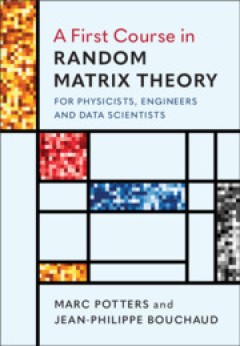
A First Course in Random Matrix Theory for Physicists, Engineers and Data Sc…
The real world is perceived and broken down as data, models and algorithms in the eyes of physicists and engineers. Data is noisy by nature and classical statistical tools have so far been successful in dealing with relatively smaller levels of randomness. The recent emergence of Big Data and the required computing power to analyse them have rendered classical tools outdated and insufficient. T…
- Edition
- -
- ISBN/ISSN
- 9781108768900
- Collation
- -
- Series Title
- -
- Call Number
- -
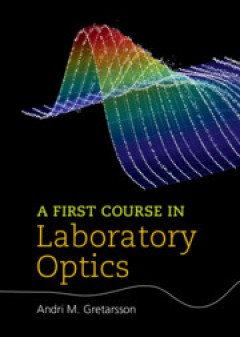
A First Course in Laboratory Optics
An optics experiment is the product of intricate planning and imagination, best learned through practice. Bringing forth the creative side of experimental physics through optics, this book introduces its readers to the fundamentals of optical design through seven key experiments. The book includes several topics to support readers preparing to enter industrial or academic research laboratories.…
- Edition
- -
- ISBN/ISSN
- 9781108772334
- Collation
- -
- Series Title
- -
- Call Number
- -

A First Course in General Relativity
Clarity, readability, and rigor combine in the third edition of this widely used textbook to provide the first step into general relativity for advanced undergraduates with a minimal background in mathematics. Topics within relativity that fascinate astrophysics researchers and students alike are covered with Schutz's characteristic ease and authority, from black holes to relativistic objects, …
- Edition
- -
- ISBN/ISSN
- 9781108610865
- Collation
- -
- Series Title
- -
- Call Number
- -

The Earliest Stages of Massive Clustered Star Formation: Fragmentation of Inf…
This thesis presents an in-depth, high-resolution observational study on the very beginning of the formation process: the fragmentation of dense molecular clouds known as infrared dark clouds (IRDCs). Using the Submillimeter Array (SMA) and Very Large Array (VLA) radio interferometers, the author has discovered a common picture of hierarchical fragmentation that challenges some of the leading t…
- Edition
- 1
- ISBN/ISSN
- 978-3-662-44969-1
- Collation
- XX, 145, 14 b/w illustrations, 23 illustrations in colour
- Series Title
- Springer Theses
- Call Number
- -

The Complex Lives of Star Clusters
As with the author’s recent books Extreme Explosions and Under a Crimson Sun, the complex topic of star clusters is broken down and made accessible with clear links to other areas of astronomy in a language which the non-specialist can easily read and enjoy. The full range of topics are addressed regarding how star clusters are formed. Why is it some are dense conglomerates of stars while oth…
- Edition
- 1
- ISBN/ISSN
- 978-3-319-14234-0
- Collation
- XV, 343, 64 illustrations in colour
- Series Title
- Astronomers' Universe
- Call Number
- -
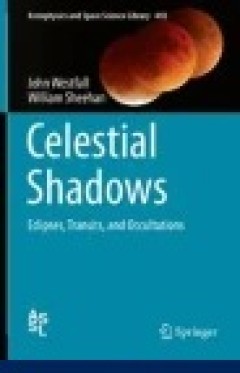
Celestial Shadows
Much of what is known about the universe came from the study of celestial shadows. This book looks in detail at the way eclipses and other celestial shadows have given us amazing insights into the nature of the objects in our solar system and how they are even helping us discover and analyze planets that orbit stars other than our Sun. A variety of eclipses, transits, and occultations of the mo…
- Edition
- -
- ISBN/ISSN
- 978-1-4939-1535-4
- Collation
- -
- Series Title
- -
- Call Number
- 520

A Breviary of Seismic Tomography: Imaging the Interior of the Earth and Sun
This is the first textbook to cover the essential aspects of the topic at a level accessible to students. While focusing on applications in solid earth geophysics, the book also includes excursions into helioseismology, thereby highlighting the strong affinity between the two fields. The book provides a comprehensive introduction to seismic tomography, including the basic theory of wave propaga…
- Edition
- -
- ISBN/ISSN
- 9780511984709
- Collation
- -
- Series Title
- -
- Call Number
- -

3K: The Cosmic Microwave Background Radiation
What processes fixed the designs etched on the cosmic background radiation (CBR)? And what can they tell us about the early Universe, and the origin and evolution of cosmic structure? This review covers all aspects of three decades of study of this ghostly remnant of the hot Big Bang origin of the Universe, and examines the consequences for astrophysics, cosmology and theories of the evolution …
- Edition
- -
- ISBN/ISSN
- 9780511525070
- Collation
- -
- Series Title
- -
- Call Number
- -
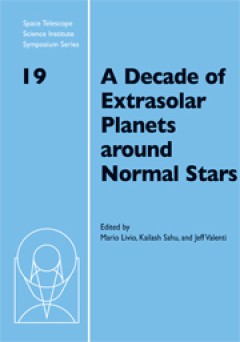
A Decade of Extrasolar Planets around Normal Stars
Humans have long thought that planetary systems similar to our own should exist around stars other than the Sun, yet the search for planets outside our Solar System has had a dismal history of discoveries that could not be confirmed. However, this all changed in 1995, after which astonishing progress can be seen in this field; we now know of more than 200 extrasolar planets. These findings mark…
- Edition
- Mario Livio,Mario Liv,iJeff Valentio
- ISBN/ISSN
- 9780511536304
- Collation
- -
- Series Title
- Space Telescope Science Institute Symposium Series (19)
- Call Number
- -
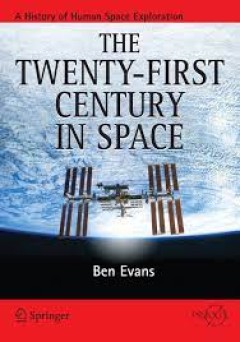
The Twenty-first Century in Space
This final entry in the History of Human Space Exploration mini-series by Ben Evans continues with an in-depth look at the latter part of the 20th century and the start of the new millennium. Picking up where Partnership in Space left off, the story commemorating the evolution of manned space exploration unfolds in further detail. More than fifty years after Yuri Gagarin’s pioneering journey …
- Edition
- -
- ISBN/ISSN
- 978-1-4939-1307-7
- Collation
- -
- Series Title
- -
- Call Number
- -
 Computer Science, Information & General Works
Computer Science, Information & General Works  Philosophy & Psychology
Philosophy & Psychology  Religion
Religion  Social Sciences
Social Sciences  Language
Language  Pure Science
Pure Science  Applied Sciences
Applied Sciences  Art & Recreation
Art & Recreation  Literature
Literature  History & Geography
History & Geography